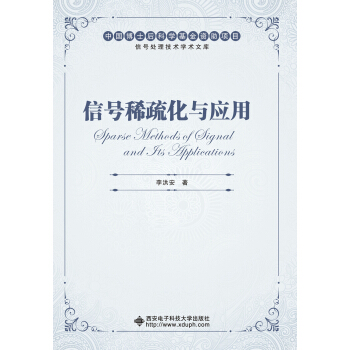![操作系统――精髓与设计原理(第八版)(英文版) [Operating Systems: Internals and Design Principles]](https://pic.windowsfront.com/12118709/5956828fN3213bf65.jpg)

具体描述
编辑推荐
适读人群 :本书可作为高等学校计算机科学与技术专业操作系统课程的教材,也可供其他专业学生参考。?Windows 8:详细介绍了Windows 8内核的各种关键技术。
?Android操作系统:详细介绍了Android移动平台的限制和运行环境。
?嵌入式Linux:详细介绍了嵌入式Linux的关键要素。
?虚拟机:新增了虚拟机操作系统设计问题的一章。
?多核设计问题:增加了关于操作系统设计问题的讨论。
?I/O标准化:更新了相应的接口内容。
?存储硬件:更新了存储硬件部分,包含了固态硬盘驱动器。
?容错:新增了介绍容错机制的一节。
内容简介
本书既是关于操作系统概念、结构和机制的教材,目的是尽可能清楚和全面地展示现代操作系统的本质和特点;也是讲解操作系统的经典教材,不仅系统地讲述了操作系统的基本概念、原理和方法,而且以当代*流行的操作系统Windows 8、UNIX、Android、Linux为例,展现了当代操作系统的本质和特点。全书共分背景知识、进程、内存、调度、输入/输出和文件、嵌入式系统六部分,内容包括计算机系统概述、操作系统概述、进程描述和控制、线程、并发性:互斥和同步、并发:死锁和饥饿、内存管理、虚拟内存、单处理器调度、多处理器和实时调度、I/O管理和磁盘调度、文件管理、嵌入式操作系统、虚拟机、计算机安全技术、分布式处理、客户/服务器和集群等。此外,本书配套网站提供了及时、生动的材料。
作者简介
William Stallings:美国圣母大学电子工程学士,麻省理工学院计算机科学博士,《密码术》期刊编委。美国多家高科技公司执行总监,政府机构、计算机软/硬件供应商顾问;曾为各种计算机和操作系统设计并实现TCP/IP和OSI协议套件;创建并维护了计算机科学专业学生资源网站ComputerScienceStudent.com。出版图书17种,内容涉及计算机安全、计算机网络和计算机系统结构等;在《IEEE进展》《ACM计算评论》和《密码术》等杂志上发表文章多篇;先后12次获美国年度*佳计算机科学教科书奖和学术作者协会奖。
目录
Online ResourcesVideoNotes
Preface
About the Author
Chapter 0 Guide for Readers and Instructors 1
0.1 Outline of this Book 2
0.2 Example Systems 2
0.3 A Roadmap for Readers and Instructors 3
0.4 Internet and Web Resources 4
Part 1 Background 7
Chapter 1 Computer System Overview 7
1.1 Basic Elements 8
1.2 Evolution of the Microprocessor 10
1.3 Instruction Execution 10
1.4 Interrupts 13
1.5 The Memory Hierarchy 24
1.6 Cache Memory 27
1.7 Direct Memory Access 31
1.8 Multiprocessor and Multicore Organization 32
1.9 Recommended Reading 36
1.10 Key Terms, Review Questions, and Problems 36
1A Performance Characteristics of Two-Level Memories 39
Chapter 2 Operating System Overview 46
2.1 Operating System Objectives and Functions 47
2.2 The Evolution of Operating Systems 52
2.3 Major Achievements 61
2.4 Developments Leading to Modern Operating Systems 70
2.5 Fault Tolerance 73
2.6 OS Design Considerations for Multiprocessor and Multicore 76
2.7 Microsoft Windows Overview 79
2.8 Traditional UNIX Systems 86
2.9 Modern UNIX Systems 89
2.10 Linux 91
2.11 Android 96
2.12 Recommended Reading and Animations 102
2.13 Key Terms, Review Questions, and Problems 103
Part 2 Processes 105
Chapter 3 Process Description and Control 105
3.1 What Is a Process? 107
3.2 Process States 109
3.3 Process Description 124
3.4 Process Control 133
3.5 Execution of the Operating System 139
3.6 UNIX SVR4 Process Management 142
3.7 Summary 147
3.8 Recommended Reading and Animations 147
3.9 Key Terms, Review Questions, and Problems 148
Chapter 4 Threads 152
4.1 Processes and Threads 153
4.2 Types of Threads 159
4.3 Multicore and Multithreading 166
4.4 Windows 8 Process and Thread Management 171
4.5 Solaris Thread and SMP Management 178
4.6 Linux Process and Thread Management 182
4.7 Android Process and Thread Management 186
4.8 Mac OS X Grand Central Dispatch 190
4.9 Summary 193
4.10 Recommended Reading 193
4.11 Key Terms, Review Questions, and Problems 194
Chapter 5 Concurrency: Mutual Exclusion and Synchronization 199
5.1 Principles of Concurrency 202
5.2 Mutual Exclusion: Hardware Support 210
5.3 Semaphores 214
5.4 Monitors 227
5.5 Message Passing 233
5.6 Readers/Writers Problem 240
5.7 Summary 244
5.8 Recommended Reading and Animations 245
5.9 Key Terms, Review Questions, and Problems 246
Chapter 6 Concurrency: Deadlock and Starvation 259
6.1 Principles of Deadlock 260
6.2 Deadlock Prevention 269
6.3 Deadlock Avoidance 271
6.4 Deadlock Detection 277
6.5 An Integrated Deadlock Strategy 279
6.6 Dining Philosophers Problem 280
6.7 UNIX Concurrency Mechanisms 282
6.8 Linux Kernel Concurrency Mechanisms 286
6.9 Solaris Thread Synchronization Primitives 293
6.10 Windows 7 Concurrency Mechanisms 295
6.11 Android Interprocess Communication 299
6.12 Summary 300
6.13 Recommended Reading and Animations 301
6.14 Key Terms, Review Questions, and Problems 302
Part 3 Memory 309
Chapter 7 Memory Management 309
7.1 Memory Management Requirements 310
7.2 Memory Partitioning 314
7.3 Paging 325
7.4 Segmentation 328
7.5 Summary 330
7.6 Recommended Reading and Animations 330
7.7 Key Terms, Review Questions, and Problems 330
7A Loading and Linking 333
Chapter 8 Virtual Memory 340
8.1 Hardware and Control Structures 341
8.2 Operating System Software 358
8.3 UNIX and Solaris Memory Management 377
8.4 Linux Memory Management 383
8.5 Windows Memory Management 386
8.6 Android Memory Management 389
8.7 Summary 389
8.8 Recommended Reading and Animations 390
8.9 Key Terms, Review Questions, and Problems 391
Part 4 Scheduling 397
Chapter 9 Uniprocessor Scheduling 397
9.1 Types of Processor Scheduling 398
9.2 Scheduling Algorithms 402
9.3 Traditional UNIX Scheduling 424
9.4 Summary 426
9.5 Recommended Reading and Animations 427
9.6 Key Terms, Review Questions, and Problems 428
Chapter 10 Multiprocessor, Multicore, and Real-Time Scheduling 432
10.1 Multiprocessor and Multicore Scheduling 433
10.2 Real-Time Scheduling 446
10.3 Linux Scheduling 461
10.4 UNIX SVR4 Scheduling 465
10.5 UNIX FreeBSD Scheduling 466
10.6 Windows Scheduling 470
10.7 Summary 472
10.8 Recommended Reading 473
10.9 Key Terms, Review Questions, and Problems 473
Part 5 Input/Output and Files 477
Chapter 11 I/O Management and Disk Scheduling 477
11.1 I/O Devices 478
11.2 Organization of the I/O Function 480
11.3 Operating System Design Issues 483
11.4 I/O Buffering 486
11.5 Disk Scheduling 489
11.6 RAID 496
11.7 Disk Cache 505
11.8 UNIX SVR4 I/O 509
11.9 Linux I/O 512
11.10 Windows I/O 515
11.11 Summary 517
11.12 Recommended Reading and Animations 518
11.13 Key Terms, Review Questions, and Problems 519
Chapter 12 File Management 522
12.1 Overview 523
12.2 File Organization and Access 529
12.3 B-Trees 533
12.4 File Directories 536
12.5 File Sharing 541
12.6 Record Blocking 542
12.7 Secondary Storage Management 544
12.8 UNIX File Management 552
12.9 Linux Virtual File System 557
12.10 Windows File System 561
12.11 Android File Management 566
12.12 Summary 567
12.13 Recommended Reading 568
12.14 Key Terms, Review Questions, and Problems 568
Part 6 Embedded Systems 571
Chapter 13 Embedded Operating Systems 571
13.1 Embedded Systems 572
13.2 Characteristics of Embedded Operating Systems 573
13.3 Embedded Linux 576
13.4 TinyOS 577
13.5 Recommended Reading 587
13.6 Key Terms, Review Questions, and Problems 587
Chapter 14 Virtual Machines 590
14.1 Approaches to Virtualization 593
14.2 Processor Issues 596
14.3 Memory Management 598
14.4 I/O Management 600
14.5 VMware ESXi 602
14.6 Microsoft Hyper-V and Xen Variants 604
14.7 Java VM 606
14.8 Linux VServer Virtual Machine Architecture 606
14.9 Android Virtual Machine 609
14.10 Summary 611
14.11 Recommended Reading 612
14.12 Key Terms, Review Questions, and Problems 613
Chapter 15 Operating System Security 614
15.1 Intruders and Malicious Software 615
15.2 Buffer Overflow 619
15.3 Access Control 627
15.4 UNIX Access Control 635
15.5 Operating Systems Hardening 638
15.6 Security Maintenance 642
15.7 Windows Security 643
15.8 Summary 648
15.9 Recommended Reading 649
15.10 Key Terms, Review Questions, and Problems 649
Chapter 16 Distributed Processing, Client/Server, and Clusters 652
16.1 Client/Server Computing 653
16.2 Distributed Message Passing 664
16.3 Remote Procedure Calls 667
16.4 Clusters 671
16.5 Windows Cluster Server 676
16.6 Beowulf and Linux Clusters 678
16.7 Summary 680
16.8 Recommended Reading 681
16.9 Key Terms, Review Questions, and Problems 682
Appendices
Appendix A Topics in Concurrency A-1
Appendix B Programming and Operating System Projects B-1
References 685
Credits 699
Online Chapters and Appendices1
Chapter 17 Network Protocols
17.1 The Need for a Protocol Architecture 17-4
17.2 The TCP/IP Protocol Architecture 17-9
17.3 Sockets 17-19
17.4 Linux Networking 17-26
17.5 Summary 17-29
17.6 Recommended Reading and Web Sites 17-30
17.7 Key Terms, Review Questions, and Problems 17-31
17A The Trivial File Transfer Protocol 17-42
Chapter 18 Distributed Process Management
18.1 Process Migration 18-2
18.2 Distributed Global States 18-14
18.3 Distributed Mutual Exclusion 18-22
18.4 Distributed Deadlock 18-41
18.5 Summary 18-59
18.6 Recommended Reading 18-60
18.7 Key Terms, Review Questions, and Problems 18-61
Chapter 19 Overview of Probability and Stochastic Processes
19.1 Probability 19-2
19.2 Random Variables 19-10
19.3 Elementary Concepts of Stochastic Processes 19-19
19.4 Recommended Reading and Web Sites 19-34
19.5 Key Terms, Review Questions, and Problems 19-35
Chapter 20 Queueing Analysis
20.1 How Queues Behave―A Simple Example 20-3
20.2 Why Queuing Analysis? 20-8
20.3 Queueing Models 20-12
20.4 Single-Server Queues 20-24
20.5 Multiserver Queues 20-28
20.6 Examples 20-30
20.7 Queues with Priorities 20-38
20.8 Networks of Queues 20-40
20.9 Other Queueing Models 20-46
20.10 Estimating Model Parameters 20-48
20.11 Recommended Reading and Web Sites 20-53
20.12 Key Terms, Review Questions, and Problems 20-54
Programming Project One Developing a Shell
Programming Project Two The HOST Dispatcher Shell
Appendix C Topics in Computer Organization C-1
Appendix D Object-Oriented Design D-1
Appendix E Amdahl’s Law E-1
Appendix F Hash Tables F-1
Appendix G Response Time G-1
Appendix H Queueing System Concepts H-1
Appendix I The Complexity of Algorithms I-1
Appendix J Disk Storage Devices J-1
Appendix K Cryptographic Algorithms K-1
Appendix L Standards Organizations L-1
Appendix M Sockets: A Programmer’s Introduction M-1
Appendix N The International Reference Alphabet N-1
Appendix O BACI: The Ben-Ari Concurrent Programming System O-1
Appendix P Procedure Control P-1
Appendix Q Ecos Q-1
Glossary
VideoNotes
Locations of VideoNotes
http://www.pearsonhighered.com/stallings
Chapter 5 Concurrency: Mutual Exclusion and Synchronization 199
5.1 Illustration of Mutual Exclusion 208
5.2 Hardware Support for Mutual Exclusion 212
5.3 A Definition of Semaphore Primitives 216
5.4 A Definition of Binary Semaphore Primitives 217
5.6 Mutual Exclusion Using Semaphores 219
5.9 An Incorrect Solution to the Infinite-Buffer Producer/Consumer Problem
Using Binary Semaphores 222
5.10 A Correct Solution to the Infinite-Buffer Producer/Consumer Problem
Using Binary Semaphores 224
5.11 A Solution to the Infinite-Buffer Producer/Consumer Problem
Using Semaphores 225
5.13 A Solution to the Bounded-Buffer Producer/Consumer Problem
Using Semaphores 226
5.14 Two Possible Implementations of Semaphores 227
5.16 A Solution to the Bounded-Buffer Producer/Consumer Problem
Using a Monitor 230
5.17 Bounded-Buffer Monitor Code for Mesa Monitor 232
5.20 Mutual Exclusion Using Messages 238
5.21 A Solution to the Bounded-Buffer Producer/Consumer Problem
Using Messages 239
5.22 A Solution to the Readers/Writers Problem Using Semaphores:
Readers Have Priority 241
5.23 A Solution to the Readers/Writers Problem Using Semaphores:
Writers Have Priority 243
5.24 A Solution to the Readers/Writers Problem Using Message Passing 244
5.25 An Application of Coroutines 248
Chapter 6 Concurrency: Deadlock and Starvation 259
6.9 Deadlock Avoidance Logic 276
6.12 A First Solution to the Dining Philosophers Problem 281
6.13 A Second Solution to the Dining Philosophers Problem 282
6.14 A Solution to the Dining Philosophers Problem Using a Monitor 283
6.18 Another Solution to the Dining Philosophers Problem Using a Monitor 307
Chapter 13 Embedded Operating Systems 571
13.6 Condition Variable Example Code 589
Chapter 18 Distributed Process Management
18.11 Token.Passing Algorithm (for Process Pi) 40
18.14 A Distributed Deadlock Detection Algorithm 50
Appednix A Topics in Concurrency A-1
A.1 Mutual Exclusion Attempts A-3
A.2 Dekker’s Algorithm A-6
A.3 Peterson’s Algorithm for Two Processes A-7
A.5 An Unfair Barbershop A-17
A.6 A Fair Barbershop A-20
前言/序言
Preface
Since the seventh edition of this book was published, the field has seen continued innovations and improvements. In this new edition, I try to capture these changes while maintaining a broad and comprehensive coverage of the entire field. To begin the process of revision, the seventh edition of this book was extensively reviewed by a number of professors who teach the subject and by professionals working in the field. The result is that, in many places, the narrative has been clarified and tightened, and illustrations have been improved.
Beyond these refinements to improve pedagogy and user friendliness, the technical content of the book has been updated throughout, to reflect the ongoing changes in this exciting field, and the instructor and student support has been expanded. The most noteworthy changes are as follows:
? Windows 8: Windows 8 is Microsoft’s latest OS offering for PCs, workstations, and servers, which includes a number of changes to the internal architecture.
The new edition provides details on Windows 8 internals in all of the key technology areas covered in this book, including process/thread management, scheduling, memory management, security, file systems, and I/O.
? Android operating system: Android is the fastest growing mobile platform. The real-world constraints and operating environment of mobile devices are quite different from traditional desktop or server computers. It is important for students to learn this new environment.
? Embedded Linux: The use of a minimal version of Linux for embedded systems has grown in popularity. This new edition provides an overview of the key elements of the embedded Linux approach.
? Virtual machines: Server virtualization and other forms of virtual machines are becoming increasingly widespread. A new chapter deals with the operating system design issues for virtual machines.
? Multicore design issues: The dominant computer architecture is now multicore. This raises new OS design issues that are addressed in this new edition.
? I/O standards: The book has been updated to reflect the latest developments, including Thunderbolt.
? Storage hardware: The discussion of storage hardware has been updated and now includes discussion of solid-state drives.
? Fault tolerance: The ACM/IEEE Computer Science Curricula 2013 lists fault tolerance as one of the core topics for an OS course. A new section provides an overview of fault tolerance. Objectives
This book is about the concepts, structure, and mechanisms of operating systems. Its purpose is to present, as clearly and completely as possible, the nature and characteristics of modern-day operating systems.
This task is challenging for several reasons. First, there is a tremendous range and variety of computer systems for which operating systems are designed. These include embedded systems, smart phones, single-user workstations and personal computers, medium-sized shared systems, large mainframe and supercomputers, and specialized machines such as real-time systems. The variety is not just in the capacity and speed of machines, but in applications and system support requirements.
Second, the rapid pace of change that has always characterized computer systems continues with no letup. A number of key areas in operating system design are of recent origin, and research into these and other new areas continues.
In spite of this variety and pace of change, certain fundamental concepts apply consistently throughout. To be sure, the application of these concepts depends on the current state of technology and the particular application requirements. The intent of this book is to provide a thorough discussion of the fundamentals of operating system design and to relate these to contemporary design issues and to current directions in the development of operating systems. Example Systems
This text is intended to acquaint the reader with the design principles and implementation issues of contemporary operating systems. Accordingly, a purely conceptual or theoretical treatment would be inadequate. To illustrate the concepts and
用户评价
作为一名长久以来在编程领域摸爬滚打的开发者,我深知理解操作系统底层原理的重要性。而这本书,无疑是填补我在这方面知识空白的最佳选择。它并没有回避那些可能令人生畏的复杂概念,而是以一种循序渐进、层层递进的方式,将它们清晰地呈现在读者面前。例如,在处理并发与同步这一极具挑战性的主题时,作者们没有采用过于抽象的理论,而是通过生动的多线程场景模拟,详细解释了竞态条件、死锁等问题的产生原因,并着重介绍了互斥锁、信号量、条件变量等经典同步机制的原理和使用方法。我特别欣赏书中对这些机制的细致阐述,不仅解释了它们是如何工作的,还强调了在实际应用中需要注意的陷阱和最佳实践。阅读这些内容,让我对多核处理器上的并行计算有了更深刻的理解,也让我能够更加自信地去编写和调试多线程程序。这本书的价值在于,它不仅教授了“是什么”,更教会了“为什么”和“怎么做”。
评分总而言之,这本书是一部关于操作系统的经典之作,它以其严谨的学术态度、深刻的设计洞察和清晰的讲解风格,为我构建了一个坚实的操作系统知识体系。它不仅仅是一本教材,更是一本能够激发读者思考和探索的宝藏。我从书中获得的,不仅仅是知识,更是一种看待和解决复杂系统问题的思维方式。书中关于虚拟化技术的介绍,虽然篇幅不多,但其对虚拟机监视器(VMM)工作原理的阐述,让我对现代云计算和虚拟化技术有了初步的认识。这让我明白,操作系统领域的研究和发展从未停止,总有新的技术和概念在不断涌现。这本书让我对操作系统的未来充满了好奇,也激励我继续在这个充满挑战和机遇的领域深耕下去。它是一本值得反复阅读,并在职业生涯中不断回味的杰作。
评分这本书就像一位经验丰富的老友,在你最需要的时候,循循善诱地为你揭示操作系统那深邃而迷人的世界。初次翻开,扑面而来的便是一种沉静而坚实的学术气息。它不像那些试图用花哨的排版和耸人听闻的标题来吸引眼球的教材,而是踏踏实实地、由浅入深地构建起你对操作系统的认知框架。从最基础的进程概念,到复杂的内存管理,再到并发与同步的挑战,每一个章节都像是一块精心打磨的基石,稳固地支撑起你理解后续更高级主题的楼阁。我尤其喜欢它在介绍某些核心概念时,那种严谨的逻辑推导和对底层细节的深入剖析。例如,在讲解调度算法时,作者并没有停留在理论公式的罗列,而是通过生动形象的例子,模拟了CPU如何在不同的进程之间切换,以及各种算法在不同场景下的性能表现。这种“知其然,更知其所以然”的教学方式,极大地提升了我对操作系统的理解深度,让我不再是囫囵吞枣,而是真正地掌握了操作系统工作的脉络。它仿佛是一位技艺精湛的工匠,一点点地向你展示着一台精密的机器是如何被设计、构建和运行的,让你在惊叹其设计智慧的同时,也充满了探索的欲望。
评分这本书的结构设计非常合理,每一章都建立在前一章的基础上,形成了一个坚实的知识体系。我在学习过程中,很少感到知识的断层或者迷失方向。尤其是关于并发和同步的章节,作者们并没有一次性抛出所有概念,而是循序渐进地引导读者理解问题的本质,然后逐步介绍解决方案。例如,在讲解了互斥锁的基本原理后,又自然地引入了信号量,并解释了信号量在某些场景下比互斥锁更具优势的原因。这种循序渐进的讲解方式,让我能够逐步消化吸收,并在大脑中构建起一个清晰的知识网络。此外,书中提供的丰富的参考文献和进一步阅读的建议,也为我提供了探索更深层次问题的途径。这本书就像一位循循善诱的良师,始终站在读者的角度,确保你能够跟上它的步伐,并且在学习的过程中不断获得成就感。
评分这本书带给我的震撼,远不止于知识的传递,更在于它所展现出的那种对技术精髓的追求和对工程实践的深刻洞察。作者们以一种近乎虔诚的态度,将操作系统的设计原理剖析得淋漓尽致。我至今仍清晰地记得,在阅读关于文件系统那一章时,那种豁然开朗的感觉。它不仅介绍了文件系统的基本结构和操作,更深入地探讨了不同文件系统(如FAT、NTFS、Ext4等)的设计理念、优缺点以及它们是如何在效率、可靠性和兼容性之间取得平衡的。书中对虚拟内存的管理策略,例如页面置换算法(FIFO, LRU, Optimal等)的详细讲解,配合着精妙的图示,让我彻底理解了有限的物理内存是如何被抽象成更大的虚拟地址空间的,以及操作系统如何通过复杂的调度机制来高效地利用这些资源。这种深入到操作系统内核层面的剖析,让我明白了为什么我们在使用电脑时,能够同时运行多个程序而不会出现严重的性能瓶颈,也让我对现代操作系统的复杂性和精妙性有了全新的认识。这本书就像一扇窗户,让我得以窥见那些隐藏在用户界面之下的宏伟工程。
评分读完这本书,我最大的感受是,我对计算机系统整体的理解得到了极大的提升。操作系统就像是计算机的“灵魂”,它连接了硬件和软件, orchestrates the entire system's operation. 在这本书的指引下,我逐渐理解了CPU调度、内存管理、I/O管理、文件系统、安全和保护等各个模块是如何协同工作的。我尤其赞赏书中对不同操作系统(如UNIX、Linux、Windows)在具体实现上的对比分析。例如,在讲解线程模型时,书中详细比较了内核级线程和用户级线程的优缺点,并分析了Linux和Windows在这方面的不同实现。这种对比分析,让我看到了同一个原理在不同设计者手中可以衍生出多么多样化的解决方案,也让我对不同操作系统的特性有了更直观的认识。这本书不仅仅是一本关于操作系统的书,它更是一本关于计算系统设计思想的书。
评分这本书给我带来的,是一种“看见”操作系统运行的能力。在阅读之前,我一直以为操作系统只是一个抽象的、不可触碰的软件层。但这本书,通过对内核数据结构、中断处理、系统调用等底层细节的深入剖析,让我仿佛拥有了一双“透视眼”,能够看到操作系统在幕后是如何工作的。我记得在学习中断处理时,书中对中断向量表、中断服务程序(ISR)以及中断嵌套的讲解,清晰地描绘了当硬件设备需要与CPU通信时,整个过程是如何被精确地管理和协调的。这种对事件驱动模型和时间片轮转等核心机制的理解,让我明白了为什么我们能够享受到如此流畅和响应迅速的用户体验。这本书不仅仅是理论的堆砌,它更注重将理论与实际紧密结合,通过分析具体的系统调用流程,让我能够理解应用程序是如何向操作系统发出请求,以及操作系统又是如何处理这些请求的。
评分这本书的优点,在我看来,在于它对“精髓”和“设计原理”的真正把握。它不是一本简单的操作手册,也不是一本充斥着代码片段的参考书,而是一本真正能够引领你思考操作系统为何如此设计、以及这些设计选择背后权衡和取舍的书。我至今仍对书中关于进程间通信(IPC)的章节记忆犹新。作者们详细对比了管道、消息队列、共享内存等不同IPC机制的特点,分析了它们的性能差异和适用场景。这不仅仅是知识的罗列,更是对不同设计理念在实际应用中如何体现的深刻洞察。通过这些对比,我能够理解在不同的通信需求下,选择哪种IPC机制能够达到最佳的效率和灵活性。这种从原理出发,再联系到具体实现的讲解方式,让我能够触类旁通,将书中的知识迁移到解决实际工程问题中去。它让我明白了,优秀的软件设计,往往是在看似简单的接口背后,隐藏着无数精巧的思考和严谨的工程实现。
评分这本书的文字风格,简洁明了,却又不失深度。作者们似乎有一种魔力,能够将那些原本复杂晦涩的概念,用一种清晰易懂的语言表达出来。我印象深刻的是,在介绍死锁的预防、避免、检测和解除这四个策略时,书中不仅给出了理论的定义,更通过生动的例子,形象地展示了每种策略的实际应用和效果。例如,在讲解死锁的避免策略时,银行家算法的描述,虽然在数学上略显复杂,但作者通过对其核心思想的拆解,让我明白了其背后“提前分配资源”以避免进入不安全状态的逻辑。这种将抽象算法具体化的能力,是这本书最宝贵的特质之一。它让我不仅记住了概念,更理解了概念背后的设计哲学和工程智慧。这本书让我觉得,学习操作系统,原来可以如此有趣和富有启发性。
评分我是在一次偶然的机会下接触到这本书的,当时我正在寻找一本能够真正帮助我理解操作系统核心的著作。这本书没有让我失望。它以一种极其系统和全面的方式,为我打开了操作系统的大门。书中对操作系统的安全机制的讨论,给我留下了深刻的印象。它不仅仅讲解了访问控制列表(ACL)和权限位等基本概念,更深入探讨了用户身份验证、数据加密、以及操作系统如何抵御各种安全威胁的原理。这些内容对于任何一个关注系统安全的人来说,都是不可或缺的。此外,书中对分布式操作系统的初步介绍,也为我提供了一个更广阔的视野,让我了解到操作系统的概念是如何延伸到更复杂的分布式环境中的。尽管分布式系统是一个庞大的领域,但书中对其基础概念和挑战的清晰阐述,为我后续的学习打下了坚实的基础。这本书就像一位博学的向导,带领我一步步探索操作系统的奥秘。
相关图书
本站所有内容均为互联网搜索引擎提供的公开搜索信息,本站不存储任何数据与内容,任何内容与数据均与本站无关,如有需要请联系相关搜索引擎包括但不限于百度,google,bing,sogou 等,本站所有链接都为正版商品购买链接。
© 2025 windowsfront.com All Rights Reserved. 静流书站 版权所有








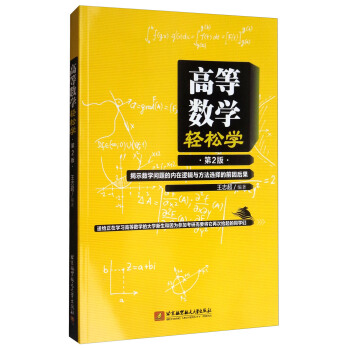
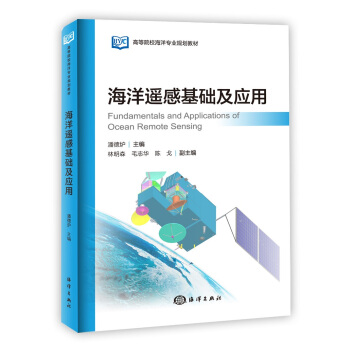
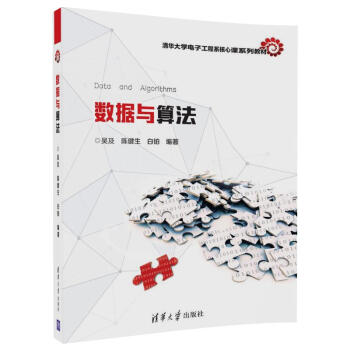


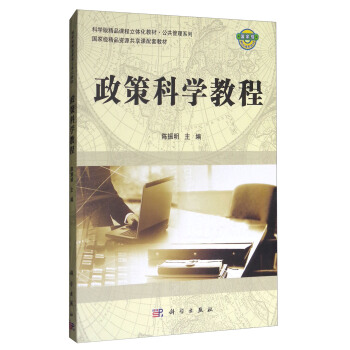
![高等有机化学(第3版)/高等学校教材 [Advanced Organic Chemistry] pdf epub mobi 电子书 下载](https://pic.windowsfront.com/12202336/59531b08N2e0aad4a.jpg)

![肿瘤放射治疗学(第3版 供医学影像学专业用)/全国高等学校教材 [Radiation Oncology] pdf epub mobi 电子书 下载](https://pic.windowsfront.com/12215958/59531b0aN9fb0d1e5.jpg)
![材料科学与工程基础(第2版)/材料科学与工程系列 [Fundamentals of Materials Science and Engineering] pdf epub mobi 电子书 下载](https://pic.windowsfront.com/12225668/5989813aNc08dcc4a.jpg)

